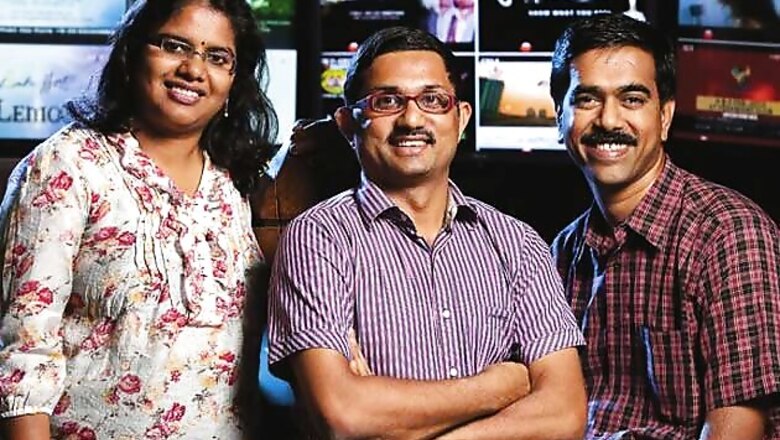
views
Soon, while you are watching a show on national television, you might find yourself watching an advert for the mom-and-pop store down your road. In fact, even today while watching some channels, you might be watching advertising that is being aired only in your city. At the same time, your friend in another city who is watching the same show could be watching a different ad. The company behind this technology is the relatively unknown Bangalore-headquartered Amagi Media Labs. This four-year-old company is gradually disrupting the conventional wisdom and business model around TV advertising in India.
It has made a beginning with the UTV Group. Today, Amagi is one of the largest buyers of ads in the UTV Group’s channels. Amagi's creative experts have churned out over 1,000 TV ads for small businesses across India in the last 18 months. Meanwhile, its 70-member sales force is busy selling TV ad slots to businesses across 35 cities in India, including Delhi and Mumbai, clocking up nearly $6 million in annualised revenue.
Breaking and making:
Amagi was founded in 2008 by three co-founders of Impulsesoft, a maker of Bluetooth software solutions for handheld devices, after its acquisition by US-based SiRF for $15 million. Venturing far from their previous domain, the three—Baskar S, Srinivasan KA and Srividhya S—decided to plant their new venture bang in the centre of India’s convoluted TV broadcasting industry. It has raised Rs 37 crore in venture funding till date; all of it from Nadathur Investments and Ojas Ventures, both backed by Infosys co-founder NS Raghavan.
"TV was seen as a "reach" media, we wanted to segment it through targeting," says Baskar, Amagi's CEO. As new business ideas go, this one seemed suicidal.
Across the world, the TV broadcasting industry is complex and opaque with big and powerful intermediaries connected with each other through secretive and dense licensing and carriage agreements. In India it's even worse, because the majority of the paid TV market is controlled at the customer end by hundreds of small-time cable operators.
But as Baskar saw it, the complexity was masking a massive inefficiency. In spite of hundreds of TV channels being present, advertising rates were still prohibitively expensive for small businesses because the ads were by default being shown to a national audience.
So, Amagi inserted itself into this ecosystem. It first built a software solution that would reside at cable operator "headends"—master facilities where numerous cable services and channels are aggregated before being transmitted to customer homes—and seamlessly insert a local ad into the national signal of a TV channel.
Because TV channels are notoriously risk-averse, Amagi assumed the risk by turning itself into a media buyer. It started buying pan-India ad slots from various TV channels before slicing and reselling them at much cheaper rates to local businesses in cities like Delhi, Mumbai, Patna and Mysore. Even larger brands can use this technology to display multiple locally relevant ads across the country at the same time, instead of being forced to run the same ad.
Amagi makes money by reselling an expensive national ad slot into tens of cheaper city-specific slots. "We want to buy an ad slot for Rs 100 and sell it for a total of Rs 200. We're aiming for 50 percent gross margins. We're not in this game for a small intermediary commission," says Baskar. He says if an ad slot can be resold in even half of the cities where he currently operates, it is profitable.
Sameer Ganapathy, business head of UTV Movies and UTV Action says, "Unlike radio and print, retail advertising on television in the HSM [Hindi speaking markets] is yet to take shape and is an evolving process. Amagi is complementing our efforts to reach out to new clients."
In cities where Amagi is unable to resell the ad slot, it either barters away to local radio channels or newspapers or inserts SMS-driven "daily deals" from e-commerce partners.
The beauty of the system is that the ad insertion in an individual city is done in an automated manner with no human intervention. And to incentivise cable operators, it shares with them part of the revenue it earns in each of the 35 cities it currently operates in.
But transparency and efficiency are not always welcome in the media industry. By allowing advertisers to choose a subset of a channel’s national viewership at lower rates, Amagi is directly attacking the business model of most TV channel groups, and the Amagi-founders are aware of the threat.


















Comments
0 comment